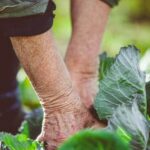The lush landscapes of Washington state provide the perfect backdrop for a vibrant and fruitful vegetable garden. Whether you’re a seasoned gardener or just starting out, Washington offers a unique environment that is conducive to growing an array of vegetables. In this article, we will explore the enchanting world of Washington vegetable gardening, highlighting the numerous advantages and rewards of cultivating your own vegetables in this region.
Washington’s climate and soil conditions create an ideal setting for certain vegetables to thrive. From juicy tomatoes to crisp lettuce, there are specific varieties that flourish in this diverse region. We will delve into the best vegetables suited for Washington’s climate and soil, providing a comprehensive guide to help you select and cultivate the perfect crops for your garden.
To ensure success with your Washington vegetable garden, having the right tools and equipment is essential. We will discuss and recommend the must-have gardening supplies that are tailored to meet the specific needs of this region. Whether you’re looking for reliable seed sources or high-quality irrigation systems, we’ll provide tips on where to find these essential tools.
Maintaining a healthy vegetable garden requires careful preparation and ongoing care. We will walk you through step-by-step instructions on how to prepare your soil, plant seeds, and nurture your plants throughout their growth cycle. Additionally, we will address common challenges faced by Washington vegetable gardeners such as watering techniques, weed control, and pest management strategies specific to this environment.
By embracing Washington vegetable gardening, not only can you experience the joy of harvesting fresh vegetables from your own backyard but also enjoy the countless benefits that come with it. From improved nutrition to reduced environmental impact, growing your own food is not only rewarding but also sustainable and empowering. So let’s dive into this fascinating world of Washington vegetable gardening.
Ideal Vegetables for Washington’s Climate and Soil
Washington state offers a unique climate and soil conditions that can be conducive to growing a variety of vegetables. However, not all vegetables thrive equally well in this region. It is important for Washington vegetable gardeners to select the right vegetables that are specifically suited for the climate and soil found in the area.
Understanding Washington’s Climate
Washington’s climate varies across different regions of the state, ranging from cool and wet in the west to drier and hotter in the east. The western part of Washington experiences mild temperatures throughout the year with abundant rainfall. On the other hand, eastern Washington has hot summers with less precipitation.
When choosing vegetables for your garden, consider the average last spring frost date and first fall frost date in your specific location. This will help you determine when to start planting and when to expect harvest. Be aware of temperature extremes or microclimates that may occur due to factors such as proximity to mountains or bodies of water.
Recommended Vegetables for Washington State
Some vegetables are well-suited to Washington’s climate and soil conditions, making them ideal choices for vegetable gardening enthusiasts in this region. Here are some recommended vegetables:
- Leafy Greens: Lettuce, spinach, kale, and chard are excellent options as they prefer cooler temperatures and can tolerate rainier conditions well.
- Root Vegetables: Carrots, beets, radishes, and potatoes thrive in Washington’s fertile soil. These crops benefit from loose soil that retains moisture while allowing proper drainage.
- Brassicas: Cabbage, broccoli, cauliflower, Brussels sprouts, and kohlrabi grow successfully in Washington’s cooler temperatures. They are also known to withstand light frosts.
- Legumes: Peas and beans perform well thanks to their ability to fix nitrogen into the soil-a valuable nutrient for other crops as well.
- Alliums: Onions, leeks, garlic, and shallots are suitable for Washington’s climate. They tolerate winter conditions and can handle long days during the summer.
Remember that each vegetable has specific requirements when it comes to sunlight, soil pH, and watering needs. It is crucial to take these factors into account when planning your garden to ensure optimal growth and productivity.
By selecting the ideal vegetables for Washington’s climate and soil conditions, you can set yourself up for a successful vegetable gardening experience in this beautiful state.
Essential Tools and Equipment for Washington Vegetable Gardening
Hand Tools
When it comes to Washington vegetable gardening, having a set of reliable hand tools is essential. Some basic hand tools that every gardener should have include a sturdy garden fork, a trowel, and a hand cultivator. These tools will be useful for digging and loosening soil, transplanting seedlings, and removing weeds. Additionally, investing in a quality pair of gardening gloves will protect your hands from thorns, blisters, and other potential injuries.
Watering Equipment
Washington’s climate is known for its mild summers but can still have periods of dryness. Therefore, it is vital to have proper watering equipment to ensure your vegetable garden receives sufficient hydration. A durable garden hose with an adjustable nozzle or sprinkler attachment is ideal for maintaining consistent moisture levels in the soil. For more precise watering, consider using a watering can or drip irrigation system.
Soil Testing Kit
Washington’s diverse soil types warrant testing to determine its composition and pH levels. A soil testing kit allows you to assess the nutrient content and acidity of your garden’s soil accurately. Based on the results, you can then make informed decisions about the type and amount of fertilizers or amendments needed to optimize plant growth and health.
Garden Fork or Spade
To prepare the soil properly for planting vegetables in Washington, having a garden fork or spade is crucial. These tools help break up compacted soil and remove rocks or debris that may hinder the growth of root vegetables like carrots or potatoes.
Trellises and Plant Supports
Certain crops in Washington benefit from vertical support structures like trellises or cages for optimal growth and productivity. Plants such as tomatoes, cucumbers, pole beans, and vining fruits thrive when their stems are guided upwards, maximizing space and airflow. Invest in sturdy trellises or plant supports to keep your garden well-organized and ensure that your plants are adequately supported.
Pest Control Tools
Washington’s natural landscapes can attract a variety of pests that can harm your vegetable garden. It is essential to have pest control tools, such as insect netting or row covers, to protect your plants from insects and birds. Additionally, organic pest control methods like handpicking pests or using natural sprays can help keep your garden free from harmful invaders without relying on harsh chemicals.
Garden Cart or Wheelbarrow
For moving heavy bags of soil, compost, or transporting harvested vegetables in Washington vegetable gardening, having a garden cart or wheelbarrow is incredibly useful. These tools make it easier to haul large loads around the garden while reducing the strain on your back and arms.
By having these essential tools and equipment for Washington vegetable gardening readily available, you’ll be well-prepared to create a thriving and productive vegetable garden in this region’s unique climate and soil conditions. Remember to choose high-quality tools that will last for years and always practice proper maintenance and storage for longevity.
Preparing and Maintaining Your Washington Vegetable Garden
One of the key factors for success in Washington vegetable gardening is proper preparation and maintenance of your garden. By following a few important steps, you can ensure that your vegetable garden thrives and produces a bountiful harvest.
The first step in preparing your Washington vegetable garden is to focus on the soil. Conduct a soil test to determine its pH level and nutrient content. Most vegetables prefer a slightly acidic soil with a pH range of 6.0 to 7.0. If needed, adjust the pH by adding lime to increase alkalinity or sulfur to increase acidity.
Next, remove any weeds or unwanted vegetation from the area where you plan to establish your vegetable garden. Weeds compete with your vegetables for water, nutrients, and sunlight, so it’s essential to keep them under control. Use organic methods such as hand-pulling, mulching, or using natural weed control products.
When it comes time to plant, follow the recommended planting dates for each vegetable based on Washington’s weather patterns. Planting too early or too late can affect the growth and productivity of your crops. Once planted, provide adequate water for your garden consistently throughout the growing season. Pay attention to rainfall levels and supplement with irrigation as necessary.
Regular maintenance tasks such as weeding, watering, and pest control are vital to keep your Washington vegetable garden healthy. Remove any weeds that sprout before they have a chance to mature and produce seeds. Monitor pests such as aphids, slugs, snails, and caterpillars regularly by inspecting leaves and stems for signs of damage or infestation.
Taking care of your vegetable plants also includes providing proper support when needed. Some plants like tomatoes, cucumbers, and pole beans may require trellising or staking for vertical growth support.
By following these steps for preparing and maintaining your Washington vegetable garden diligently, you can create an environment where your plants can thrive and produce a hearty harvest. Remember to adapt your gardening practices based on the specific needs of your plants and the unique conditions of your region.
Seasonal Planting Guide for Washington Vegetable Gardens
One of the keys to successful vegetable gardening in Washington is understanding the seasons and knowing when to plant different vegetables. The unique climate of Washington, with its cool and wet winters and warm summers, creates a specific planting schedule that maximizes your garden’s productivity. This seasonal planting guide will provide you with a detailed overview of the best times to plant different vegetables in Washington.
In the spring, as soon as the soil can be worked, it’s time to start planting cool-season crops. This includes leafy greens like lettuce, spinach, and kale, as well as root vegetables like carrots and turnips. These hardy crops thrive in the cooler temperatures of early spring and can tolerate some frost.
As summer approaches and the risk of frost has passed, it’s time to plant warm-season vegetables. This includes tomatoes, peppers, cucumbers, beans, and corn. These plants need warm soil and ample sunlight to grow and produce a bountiful harvest. It’s important to time your planting so that these crops have enough time to mature before the first fall frost.
Fall is another ideal season for planting in Washington. As temperatures begin to cool again, it’s time to sow cool-season crops for a late-season harvest. This includes varieties of lettuce, radishes, broccoli, cauliflower, and cabbage. These crops can withstand cooler temperatures without compromising their flavor or quality.
Winter is typically not suitable for outdoor vegetable gardening in Washington due to freezing temperatures. However, if you have access to a greenhouse or cold frame setup with heating options like a space heater or blanket covering during extreme cold snaps; you can continue growing certain cold-hardy vegetables like kale and Brussels sprouts throughout the winter months.
By following this seasonal planting guide for Washington vegetable gardens, you’ll be able to maximize your harvest yield throughout the year while taking advantage of Washington’s unique climate patterns. Remember to always check your local frost dates for precise timing recommendations in your specific area, as microclimates can vary across the state. Happy planting.
Washington Vegetable Gardening Tips and Tricks
When it comes to vegetable gardening in Washington, there are certain challenges that gardeners often face. However, with the right tips and tricks, you can overcome these challenges and have a thriving garden. Here are some expert advice and insider tips to help you make the most of your Washington vegetable garden.
- Companion Planting: One effective technique for maximizing space and deterring pests in your Washington vegetable garden is companion planting. Certain plants have natural properties that improve the growth and health of others when planted together. For example, planting marigolds alongside tomatoes can help repel pests like nematodes. Research which vegetables complement each other well and try incorporating them into your garden layout.
- Vertical Gardening: Due to limited space or challenging soil conditions, many Washington vegetable gardeners turn to vertical gardening. This method involves growing vegetables on trellises or structures that allow plants to grow vertically instead of taking up precious ground space. Popular options for vertical gardening in Washington include cucumbers, beans, peas, and tomatoes. Be sure to provide adequate support for your plants as they grow.
- Season Extension Techniques: To extend the growing season of your Washington vegetable garden, there are several techniques you can implement. Using row covers or cold frames can protect your crops from frost and extend their harvest period. Another option is to utilize greenhouses or high tunnels for year-round cultivation. These methods allow you to continue growing vegetables even during colder months.
- Soil Amendments: Washington’s soil may require additional amendments to ensure optimal plant growth. Conducting a soil test will give you valuable insights into its composition and nutrient levels. Adding organic matter such as compost or well-rotted manure can improve soil structure and fertility over time. Additionally, using mulch around your plants helps retain moisture and suppress weeds.
- Watering Techniques: Proper watering is crucial for successful vegetable gardening in Washington’s changing climate. Aim for consistent and deep watering rather than light, frequent waterings. This encourages the plants to develop deep root systems and become more resilient to drought conditions. To avoid disease and fungal problems, it is best to water the soil directly rather than overhead.
By implementing these tips and tricks, you will be better equipped to face the unique challenges of vegetable gardening in Washington. Experiment with different techniques and adapt them to your specific garden’s needs. With persistence and patience, you will soon enjoy a bountiful harvest from your Washington vegetable garden.
Harvesting and Preserving the Bounty
One of the most rewarding aspects of Washington vegetable gardening is reaping the bountiful harvest and enjoying the fresh and flavorful produce. Once you have successfully grown your vegetables, it’s time to explore the endless possibilities of preparing delicious meals using Washington-grown vegetables. In this section, we will delve into some mouthwatering recipes that showcase the flavors and versatility of these homegrown vegetables.
Fresh Vegetable Salad
– Ingredients:
- Assorted freshly harvested vegetables such as tomatoes, cucumbers, bell peppers, carrots, and radishes.
- Olive oil.
- Lemon juice.
- Salt and pepper to taste.
– Instructions:
- Wash and chop all the vegetables into bite-sized pieces.
- In a large bowl, combine the vegetables.
- Drizzle olive oil and lemon juice over the salad.
- Season with salt and pepper to taste.
- Toss everything together until well combined.
- Serve immediately as a refreshing side dish.
Roasted Root Vegetables
– Ingredients:
- Assorted root vegetables like potatoes, carrots, beets, parsnips, and turnips.
- Olive oil.
- Garlic powder.
- Dried herbs (such as rosemary or thyme).
- Salt and pepper to taste.
– Instructions:
- Preheat your oven to 425°F (218°C).
- Wash and peel the root vegetables. Cut them into uniform-sized pieces.
- In a large baking pan or sheet tray, toss the root vegetables with olive oil until well coated.
- Sprinkle garlic powder, dried herbs, salt, and pepper over the vegetables. Mix well.
Spread them out in an even layer on the pan.
Roast in the preheated oven for about 30-40 minutes or until golden brown and crispy on the outside, and fork-tender on the inside.
- Serve the roasted root vegetables as a side dish or incorporate them into other recipes for an added boost of earthy flavors.
Homemade Salsa
– Ingredients:
- Freshly harvested tomatoes.
- Onion.
- Jalapeno peppers (optional).
- Cilantro.
- Lime juice.
- Salt to taste.
– Instructions:
- Finely chop the tomatoes, onion, jalapeno peppers, and cilantro.
- Combine all the chopped ingredients in a bowl.
Drizzle lime juice over the mixture.
Season with salt according to your taste.
Mix well and let it sit for a few minutes to allow the flavors to meld together.
- This homemade salsa can be enjoyed with tortilla chips, as a topping for grilled meats or fish, or even as a condiment on sandwiches.
Preserving Your Harvest:
In addition to enjoying fresh vegetable dishes during the growing season, you can also preserve your harvest to enjoy these flavors throughout the year. Canning, freezing, and drying are popular methods of preserving vegetables. Canned tomatoes can be used later for sauces or soups, while frozen peas or corn can bring a taste of summer to your winter meals. Herbs can be dried and stored for adding flavor to your dishes all year long.
By exploring different preserving techniques, you can savor the flavors of Washington-grown vegetables long after their growing season has ended. Experimenting with pickling or making jams from produce like cucumbers or berries is another creative way to make use of surplus harvests.
Washington vegetable gardening not only offers an abundance of fresh produce but also presents endless culinary possibilities. Whether you prefer simple salads that highlight the freshness of the vegetables or more elaborate recipes that feature them as key ingredients, there is no shortage of ways to enjoy the bountiful harvest from your garden.
Showcasing Inspiring Washington Vegetable Gardens and Success Stories
Washington state is home to a vibrant community of vegetable gardeners who have transformed their landscapes into lush and bountiful gardens. These inspiring Washington vegetable gardens not only provide an abundance of fresh produce but also serve as a source of inspiration for others looking to cultivate their own edible oasis.
One such success story in Washington is the Ballard Edible Garden, located in Seattle. This impressive garden showcases how small urban spaces can be transformed into thriving vegetable gardens. With careful planning and creative use of vertical gardening techniques, the Ballard Edible Garden boasts an impressive variety of vegetables, herbs, and fruits. From heirloom tomatoes to kale and strawberries, this garden illustrates the incredible potential for growing your own food even in limited spaces.
Another inspiring example is the Full Circle Farm in Carnation. This 400-acre organic farm demonstrates the possibilities of large-scale vegetable production in Washington.
Their commitment to sustainable farming practices has led them to grow a wide range of vegetables, from staples like potatoes and carrots to unique varieties such as purple kohlrabi and watermelon radishes. Full Circle Farm also includes educational programs and community involvement, making it a true testament to the power of vegetable gardening to foster connection and build resilient communities.
These success stories are just a glimpse into the diverse world of Washington vegetable gardening. Whether you have a small backyard or access to acres of land, there are endless possibilities for creating your own flourishing vegetable garden. By learning from these inspiring examples and connecting with local gardening communities, you can embark on your own journey towards abundant harvests and sustainable living.
| Vegetable Garden | Location | Highlights |
|---|---|---|
| Ballard Edible Garden | Seattle | – Creative use of vertical gardening techniques
|
| Full Circle Farm | Carnation | – 400-acre organic farm
|
Conclusion
In conclusion, Washington vegetable gardening offers an enchanting world of beauty and benefits. With its lush landscapes and unique climate, this region provides the perfect environment for growing your own vegetables.
Throughout this article, we have explored the specific vegetables that thrive in Washington’s climate and soil conditions, as well as the essential tools and equipment needed for successful gardening. We have discussed how to prepare and maintain your garden, provided a seasonal planting guide, and shared expert tips to overcome common challenges.
By embracing the joy of Washington vegetable gardening, you are not only able to enjoy the abundance of fresh produce but also reap numerous other rewards. Growing your own vegetables allows you to have control over what goes into your food, ensuring that it is free from harmful chemicals or pesticides. Additionally, it promotes sustainability by reducing carbon emissions associated with transporting produce long distances.
So why wait? Start your own journey of abundant and sustainable vegetable gardening in beautiful Washington. Whether you have a sprawling backyard or a small balcony, there are options available to suit every space.
By following the advice provided in this article and embracing the joy of gardening, you can tap into the rich rewards that come with growing your own fresh vegetables. So get ready to experience the satisfaction of nurturing plants from seedlings to harvest and taste the difference of homegrown produce on your plate.
Frequently Asked Questions
When should I start a vegetable garden in Washington state?
The ideal time to start a vegetable garden in Washington state depends on the specific region and climate within the state. Generally, it is recommended to begin planting vegetables in late winter to early spring, typically around February or March in most areas. However, this can vary slightly depending on factors such as elevation and local weather patterns.
It is important to consider the average last frost date for your specific location, which can help determine when it’s safe to start planting outdoors. Additionally, some vegetables may benefit from starting seeds indoors or using protective structures like cold frames or row covers during colder months.
What veggies can I grow in Washington?
Washington state offers a diverse range of vegetables that can be successfully grown within its various climates and growing zones. Some common vegetables that thrive in Washington include tomatoes, peppers, cucumbers, zucchini, lettuce, kale, spinach, broccoli, carrots, onions, potatoes, peas, beans, and many more.
The state’s temperate climate and adequate rainfall provide excellent conditions for a wide variety of crops. Additionally, certain regions within the state are known for specific crops; for example, Walla Walla sweet onions and Yakima Valley hops are famous agricultural products unique to Washington.
Can you grow vegetables year round in Washington state?
While it may be challenging to grow vegetables year-round in certain parts of Washington state due to its cooler winters and shorter daylight hours during winter months., it is still possible with some careful planning and the use of certain techniques. Many cool-season vegetable varieties can be grown throughout fall and into early winter by providing them with protection against frost through covering with row covers or utilizing cold frames or greenhouses.
These measures help extend the growing season and allow for continuous harvests even during colder months.

If you’re looking to get into vegetable gardening, or are just looking for some tips on how to make your current garden better, then you’ve come to the right place! My name is Ethel and I have been gardening for years. In this blog, I’m going to share with you some of my best tips on how to create a successful vegetable garden.





